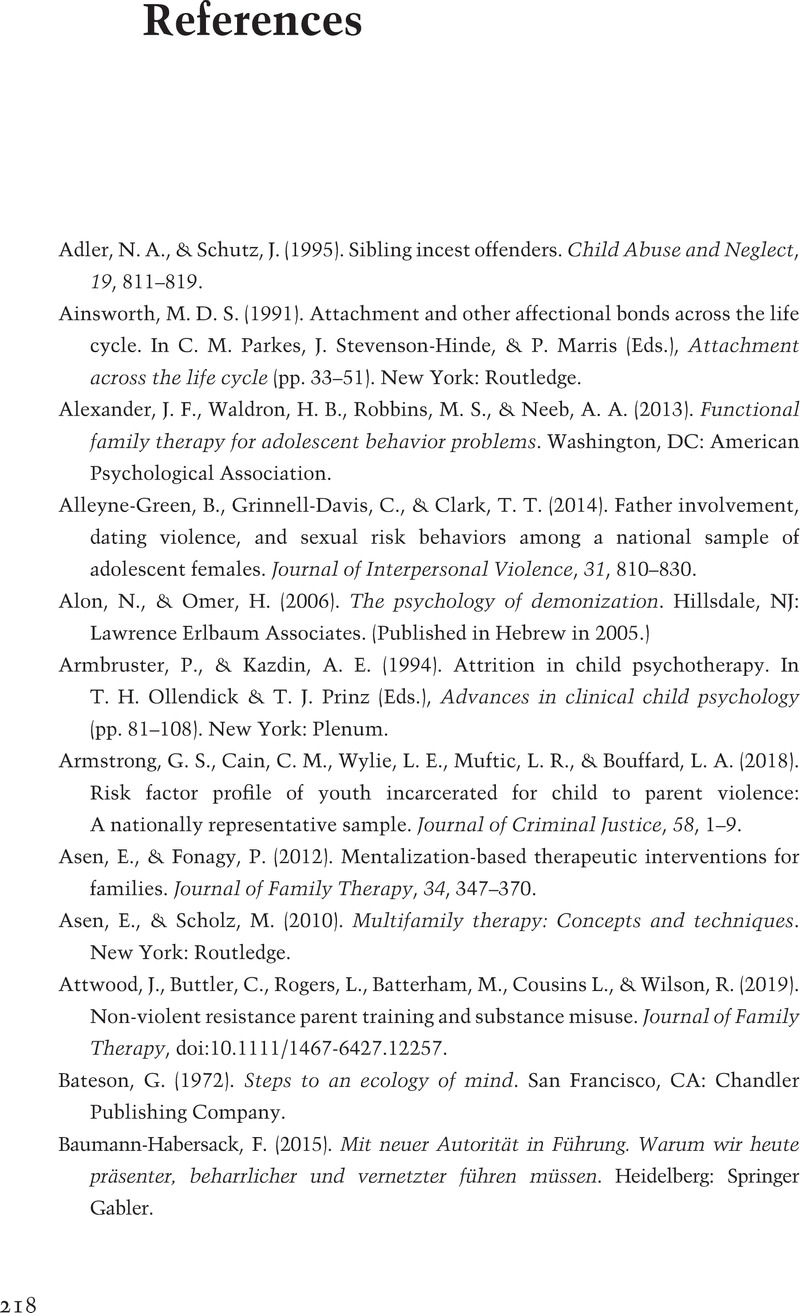Book contents
- Non-Violent Resistance
- Non-Violent Resistance
- Copyright page
- Dedication
- Contents
- Introduction to the New Edition: The Development of NVR
- 1 Principles and Goals
- 2 Escalation Processes
- 3 The Parents’ Instruction Manual
- 4 NVR in Action
- 5 Violence toward Siblings
- 6 Controlling and Seclusive Children
- 7 Schools
- 8 NVR in the Community
- Afterword
- References
- Index
- References
References
Published online by Cambridge University Press: 05 May 2021
- Non-Violent Resistance
- Non-Violent Resistance
- Copyright page
- Dedication
- Contents
- Introduction to the New Edition: The Development of NVR
- 1 Principles and Goals
- 2 Escalation Processes
- 3 The Parents’ Instruction Manual
- 4 NVR in Action
- 5 Violence toward Siblings
- 6 Controlling and Seclusive Children
- 7 Schools
- 8 NVR in the Community
- Afterword
- References
- Index
- References
Summary

- Type
- Chapter
- Information
- Non-Violent ResistanceA New Approach to Violent and Self-Destructive Children, pp. 218 - 232Publisher: Cambridge University PressPrint publication year: 2021



